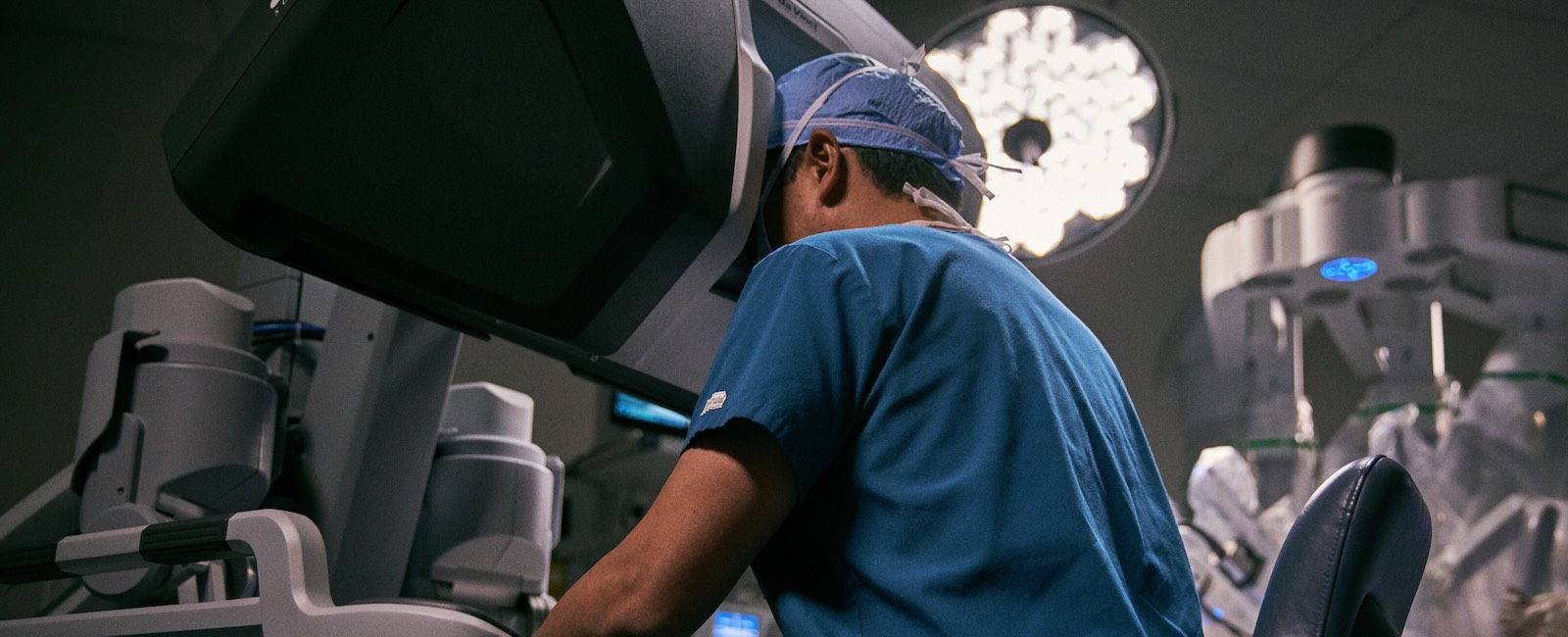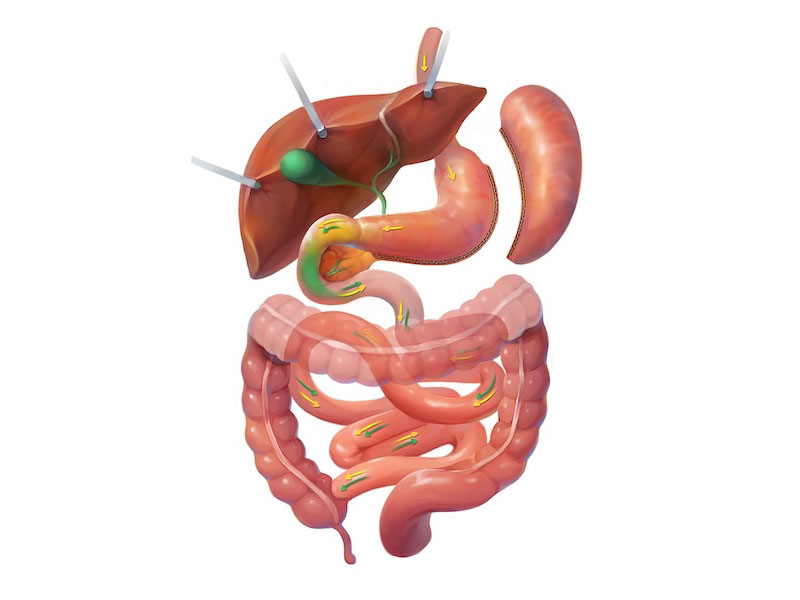
Sleeve Gastrectomy / Gastric Sleeve
How the Gastric Sleeve Works
The sleeve gastrectomy is a surgery performed solely on the stomach. There is no rerouting of the intestines like with the gastric bypass or duodenal switch procedures. The sleeve gastrectomy is typically performed in less than an hour. The majority of the outer portion of the stomach is removed, leaving a small tubular stomach behind (see photo). Often, most patients feel less hungry and are less interested in carbohydrates, and patients lose weight* despite usually not feeling hungry.

The valve at the outlet of the stomach remains, allowing the normal process of stomach emptying to continue, which results in the feeling of fullness. If you eat too quickly, take large bites of food, drink fluids with meals/snacks, or eat dry, tough, or sticky foods, vomiting or discomfort can occur.
- The sleeve is created with a surgical stapler along the inside curve of the stomach.
- The valve at the outlet of the stomach remains, allowing the normal process of stomach-emptying to continue and providing the feeling of fullness.
- After the new stomach is created, the remaining stomach is removed.
Sleeve Gastrectomy Advantages
- Simplest bariatric procedure
- Lowest incidence of complications
- Included in bariatric benefits by most insurance companies
- Minimal risk of dumping syndrome
Sleeve Gastrectomy Recovery Timeline
- Hospital stay is typically 24 to 48 hours
- Many patients return to regular activity within 1 to 2 weeks
- Heavy lifting is restricted for roughly 4 weeks
Potential Sleeve Considerations
Common side effects early on include nausea and feeling full. If you eat too quickly or too much, you may throw up, which defeats the purpose of the surgery. The average meal should be one cup of food or less over 30 minutes, five times daily, spaced 3-4 hours apart. Average weight loss depends on several factors, the most important being the patient’s compliance with their diet. Other factors include the patient’s initial weight, the incorporation of exercise and increased physical activity, the avoidance of calorie-laden beverages, and adherence to medical therapy for other ailments. Average weight loss is between 50% and 70% of your excess weight.*
Sleeve Gastrectomy Disadvantages
- Increased risk of reflux
- Weight loss success is more dependent on patient compliance with lifestyle changes
- Standard surgical risks
- Nausea and vomiting
- Leaks from the staple line

